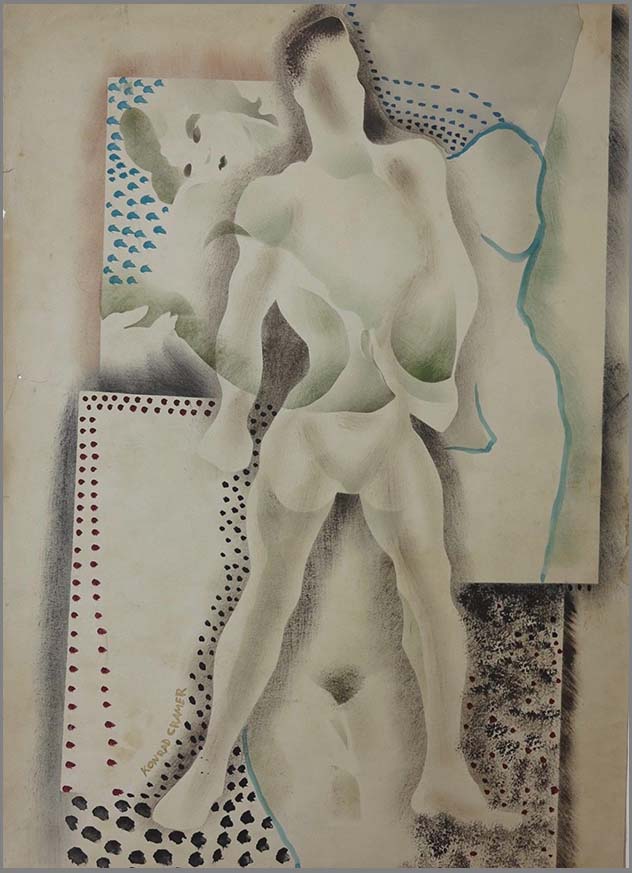Konrad Cramer was born and raised in Wurtzburg, Germany in an artistic family. His mother was an opera singer and an uncle was a well-known painter of still lifes. Cramer trained as an artist at the Karlsruhe Academy under Ludwig Schmidt-Reutte and Ernest Schurth. He became interested in the German avant-garde early in his schooling as he was exposed to and encouraged by the experimental works of Wassily Kandinsky and Franz Marc. An additional influence on Cramer's artistic development was the Cubist landscapes of Paul Cézanne.
In 1911 Cramer met and married the American artist Florence Ballin who was traveling in Germany that year. The couple first traveled through Germany, visiting the exhibitions and studios of the country's avant-guard artists. Cramer then settled with his wife in Woodstock, New York, where Ballin had painted with the Art Students League each summer since 1906. Cramer established a reputation as one of Woodstock's most modern painters with an impressive series of abstract paintings exhibited at the MacDowell Club in 1913.
In the 1920s Cramer developed a personal representational style which blended modern and regional influences. Cramer received a Rockefeller grant in 1920 to study educational methods for craftsmen in Germany and France. In 1922 he took a teaching position at the Woodstock School of Painting and helped establish the Woodstock Artists Association, where he served as a director. While teaching and painting, Cramer also applied his artistic talent to illustration and textile design.
Konrad Cramer first exhibited at the Whitney Studio Club in 1924 and participated in the Whitney Museum of American Art's first and second biennials in 1933 and 1935. He was also included in the 1935 exhibition Abstract Painting in America at the Whitney. Cramer was later included in the Whitney Museum exhibition "Pioneers of Modern Art in America" in 1946. In the 1930s, Cramer participated in many other museum invitationals, including: the Carnegie International (1929, 1933, 1937, 1938); the Pennsylvania Academy of the Fine Arts (1934, 1936) and the Corcoran Gallery of Art (1935, 1937).
In 1934 Konrad Cramer and his wife traveled to Mexico where they produced many paintings and drawings. Back in Woodstock in 1935, Cramer briefly joined the Federal Art Project, administering the regional program in Woodstock. In the mid-1930s Cramer took up photography to clarify aesthetic issues in his painting. Cramer had gotten to know Alfred Stieglitz upon his arrival in America in 1911 and wrote an essay about 291 Gallery for Stieglitz's magazine Camera Work in 1914. Through Stieglitz and then in the 1930s fellow Woodstockers like Russell Lee, Cramer became interested in the possibilities of photography and began working with it as an artistic medium.
While continuing to paint in the late 1930s and 1940s, Cramer shared his passion for photography by founding the Woodstock School of Miniature Photography in 1936 ("Miniature" referred to the then-new format of 35 mm film). He also taught photography at Bard College from 1940 to 1946. In the 1950s Cramer collaborated on a traveling exhibition and book of abstract photographs with Manuel Komroff and Nathan Resnick titled The Third Eye, which was circulated by the Department of State in 1961-1962.
Konrad Cramer died in Woodstock in 1963.
|

